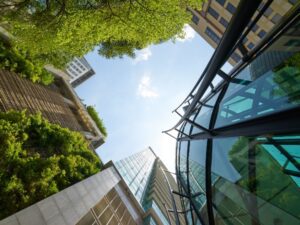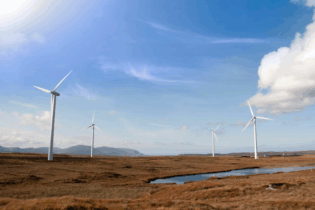President of the South African Institution of Civil Engineering (SAICE), Professor Marianne Vanderschuren, has embarked on her presidential visits across various SAICE branches and universities across South Africa.
She reinforced her message of rebuilding, maintaining and enabling a sustainable and holistic appraisal approach to unlocking South Africa’s infrastructure development. These visits included the Western Cape Branch, the University of Cape Town, and the University of Stellenbosch; and the Durban Branch, the University of KwaZulu-Natal, the Durban University of Technology (DUT), and the Mangosuthu University of Technology. She also visited the Pietermaritzburg Branch and the DUT Indumiso Campus. Other visits included the Bloemfontein Branch and the University of the Free State; as well as the Johannesburg Branch, the University of Johannesburg’s APK and DFC campuses, and the University of the Witwatersrand. Prof. Vanderschuren also spoke to the Railways and Harbour Division twice, the second time at their Women’s month breakfast. She also has an upcoming visit to the Pretoria Branch, and the University of Pretoria. “It is not all doom and gloom,” she explained. “Through collaborative efforts and refocusing how we manage our priorities, we can together continue to find solutions to mitigate our current challenges. The need for reconstruction through a more holistic approach to development has deeply entrenched my vision to address our current problems as a country. The South African population has been steadily increasing and is continuing to do so. An increasing population translates into a further need for civil infrastructure and services.” Challenges Unpacked:- The GDP outlook regressing to pre-Covid levels.
- The war in Ukraine has impacted South Africa’s wheat imports, rising interest rates, and higher food and petrol prices.
- Weakening of an already struggling economy, due to the growth-inhibiting load-shedding.
- A lack of maintenance enacted on our failing infrastructure. Since 2015, most metros have underspent on infrastructure maintenance.
- A notable exodus of skilled, well-trained civil engineers in the wake of an already existing shortage by international standards. An estimated twenty civil engineers are emigrating per month.
Projects and processes focusing on SDGs will contribute positively to South Africa’s future.
“Highlighting challenges is not a sign of pessimism, but to find opportunities to enable solutions. I will continue to carry the message of the ‘Sustainable Livelihood Approach’, which is a tool to use to start planning for our country’s sustainable future.” Vanderschuren suggested a holistic appraisal approach in assessing the viability of required infrastructure projects, as opposed to high net present values (NPV) and benefits cost ratios (BCR). “The emphasis must change from projects looking for the highest financial returns to projects looking for the highest societal impact. To make sure South Africa meets the multiple societal objectives, a more holistic optimisation appraisal approach is required.” “Our industry, perhaps even in collaboration with other industries, needs to move towards holistic appraisal practices, to make sure that investments prioritise projects with the highest overall impact. To achieve this, she said that criteria should include strategic fit, societal impact, and deliverability,” she added. “I have always echoed my support for driving maintenance in protecting South Africa’s current infrastructure,” she said. “To date, the lack of capacity has paralysed many municipalities, leaving inhabitants without services. While government builds capacity, we need interim measures to ensure that civil infrastructure investment and maintenance are monitored/audited. Instead of infrastructure deteriorating a few months after completion, why do we not build to last? We need to work on standardisation for durable infrastructure.” In this regard, Vanderschuren also called on student members of SAICE to educate their communities on how to care for infrastructure and to encourage the government to take the need for maintenance of infrastructure in the country seriously. Meanwhile, South Africa, she believes, has missed a generation of capital investment in roads, rail, ports, electricity, water, sanitation, public transport, and housing. “However, we can change this if we focus on a sustainable South Africa for the future of our country and generations to come.” In terms of the skills challenge: “Municipalities have steadily lost skilled engineers, technicians, and technologists – all skills that are vitally important to manage and maintain large capital projects. Therefore, SAICE contributes to change by providing knowledge and expertise to members and our society through an engineering pipeline. The journey begins at the scholar level and progresses to student and university level, through to candidate engineer and ultimately professional engineer – directly addressing the problem presented by emigrating engineers.” “SAICE is a significant role player in the infrastructure development environment in South Africa. We have industry experts that are seasoned in technical and strategic competencies to help innovate and rebuild our country one step at a time.” Civil engineering, she added, is at the heart of the country’s infrastructure development aimed at improving service delivery and an important contributor to South Africa’s built environment for the benefit and improvement in the quality of life for future generations.







